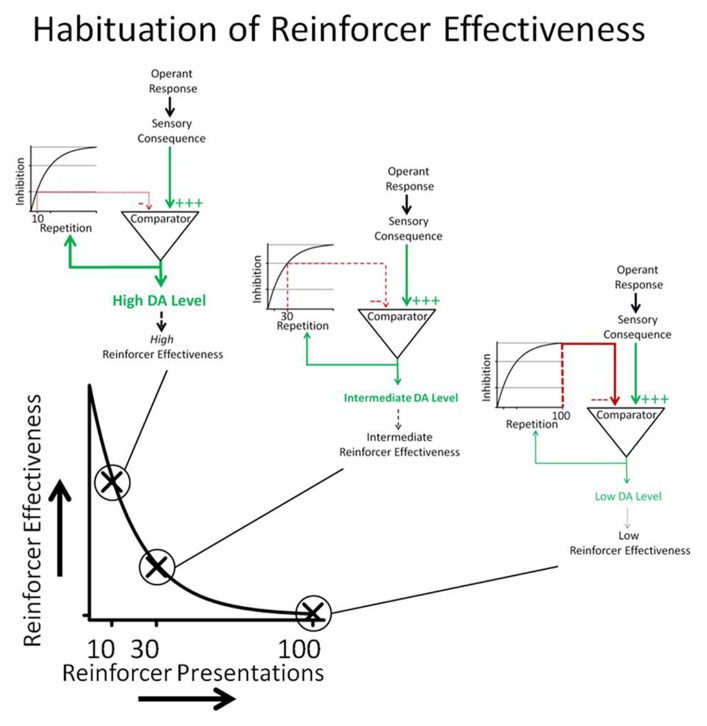FIGURE 7.
Operant responses emitted by the organism produce sensory consequences. If the response-contingent sensory stimulus is unexpected, it increases DA neurotransmission. DA neurotransmission increases the probability that the animal will repeat responses that preceded the onset of the sensory stimulus. Reinforcing effectiveness is operationally defined as response rate. The comparator process depicted in the cartoon determines the novelty of the sensory consequence. Past occurrences of the sensory consequence result in an inhibitory input into the comparator that cancels the effects of the sensory consequence DA neurotransmission. The canceling signal is the integral of the number of response-contingent sensory stimulus presentations so that the strength of the canceling signal is a function of the number of previous sensory reinforcer presentations. The cartoon shows that 10 repetitions caused less intense inhibition than 30 repetitions, which in turn caused less inhibition than 100 repetitions. The conceptual model shows how DA neurotransmission decreases as a function of reinforcer repetition and how changes in DA neurotransmission are hypothesized to underlie HRE.

